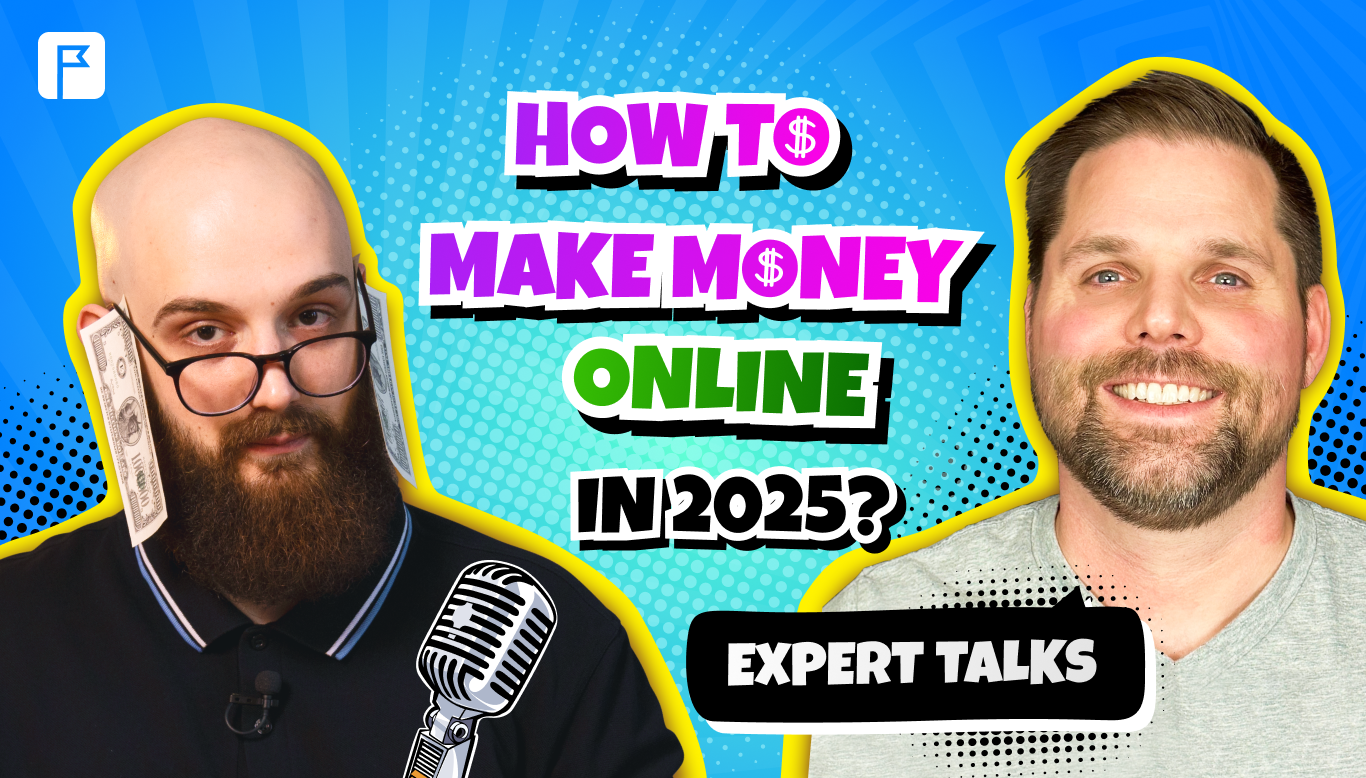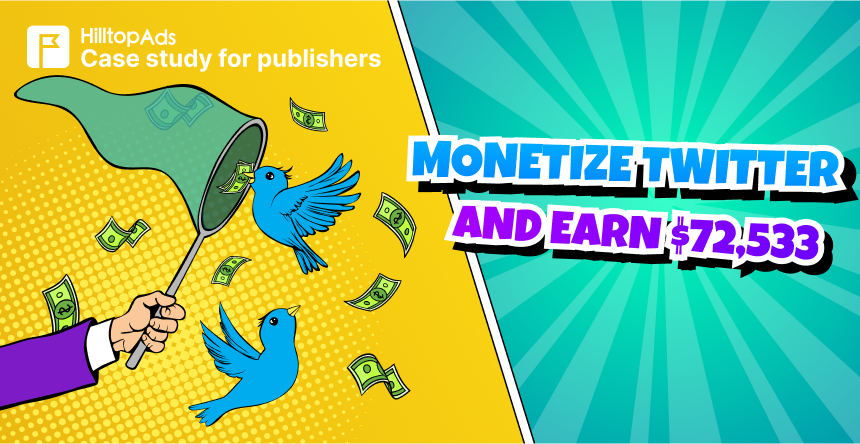SEO no longer brings traffic as easily as it once did — the rules of the game have changed.
To make money online in 2025, simply writing a few articles and waiting for Google to send traffic won’t cut it. Things work differently now: you need a systematic approach, multiple income streams, and — above all — a real interest in the topic you’re working on.
In a recent podcast, Ron Stefanski — a practitioner with 11 years of experience and the author of OneHourProfessor — and our host at HilltopAds, Den, unpack why SEO no longer reliably delivers easy traffic, how to combine ads, affiliate programs and products the right way, where AI truly helps (and where it gets in the way), and why passion for a niche sometimes matters more than a business plan.
Below you’ll find the key takeaways from the conversation. For the full interview, watch the episode on HilltopAds’ YouTube channel — one episode that could seriously change how you think about online business.
About the expert
Our speaker, Ron Stefanski, is a hands-on online entrepreneur with more than 11 years in digital marketing and website building. Before going full-time into online business, he worked as a marketing manager at FirstUp Health and at the educational group Maritas, while testing dozens of niche projects in his spare time. His breakthrough came with Jobs for Felons Hub — a resource that helps people with criminal records find employment. In month 11 the site went viral after a Facebook post, which drastically boosted traffic and enabled optimization for display advertising. That case became Ron’s turning point — he left corporate life, relocated, and focused fully on building his online business.
The experience and success of that first project helped Ron create a repeatable system for site-building and content monetization — a perspective that directly informs his view of the online business landscape in 2025.
Big-picture changes in 2025
As his career progressed, Ron scaled his site-building model by creating a portfolio of niche assets and using “revenue stacking” — combining display ads, affiliate offers, and owned products. He believes the online earning landscape has shifted dramatically: the old “write → rank in Google → get traffic” playbook no longer offers the same reliability. AI integration in search results and the appearance of “AI summaries” at the top of the page reduce organic clicks — users increasingly get answers right inside the SERP without visiting sites.
At the same time, proven monetization models remain — display ads, affiliate programs, and proprietary products — but their performance now depends heavily on how the publisher delivers audience and traffic. Ron stresses that display and popunder ads still work, but they’re ineffective without a planned traffic strategy (socials, personal brand, YouTube, email). AI becomes a tool rather than a replacement — used for headline ideas, scripts, and thumbnails, while the human retains the role of creator and face of the content.
These shifts make deliberate traffic planning and diversified revenue strategies critical — without them, no site can reliably generate sustainable income.
The core monetization playbook
Ron recommends a simple but flexible approach: base your business on affiliate marketing, and supplement it with other revenue sources — display ads and your own products. The content delivery format (blog or YouTube) is secondary — what matters is producing high-quality content and preplanning how you will attract an audience.
The practical flow looks like this: pick a niche → create a series of targeted pieces (for example, 10 review/how-to articles or videos) → place affiliate links in strategic spots → run banners for instant revenue. Ron calls this “revenue stacking”: multiple monetization streams on a single asset provide stability and growth.
Example: a cluster of web-conference articles (how-to, reviews, comparisons) + CTA for a free trial of a service (a $100 affiliate fee) + in-article banners. The key rules: choose niches with advertiser demand, plan traffic channels, and build audience trust — 2–3 solid pieces are often enough for people to start trusting you.
Bottom line for those who want to earn online in 2025: don’t lock into one model. Prioritize affiliates, complement with display and products, and always plan traffic before creating content.
Working with ad networks — lessons, pains, and what matters
On the podcast Ron highlights that the choice of ad network and the level of support dramatically affect a publisher’s revenue. He moved from Google AdSense to Ezoic and noticed two clear trends: managed networks with account managers accelerate growth and reduce mistakes, but VIP-level support isn’t available to everyone; self-serve solutions are easy to launch but leave newcomers alone with setup and optimization.
His practical advice: look for networks that offer personal guidance at the start and intuitive optimization tools, and don’t be afraid to change partners (Mediavine, AdThrive, popunder networks, etc.) if you need different revenue levels or more control.
Add your site to HilltopAds and start website monetization today!
- The highest CPM rates
- Self-serve platform
- Weekly Payouts every Tuesday without delays
- Personal support
- Auto Optimization
Lowering the entry barrier and why niche choice matters now
The entrepreneurial logic is straightforward: lower the barrier to entry for publishers — provide playbooks, video guides, and hands-on help — and conversion rates climb. Platforms that offer a “human touch” (assistant, account manager) save time and speed monetization even for sites with modest traffic. One more key reminder from the host — think about niche selection early:
“What are the niches that will monetize your traffic that makes sense, right? The niches of advertisers.”
That’s the SEO-oriented message: pick advertiser-friendly topics, combine display and affiliate models, and build a clear monetization roadmap.
Passion vs business — how to pick a content topic
Ron insists success emerges where creator interest meets monetization planning. In his view, trying to “monetize a single piece immediately” is a common mistake: instead, create a series of useful content (15–20 posts or videos), learn how the audience responds, then scale and sell. AI tools are useful as assistants — for idea generation, headlines, and drafts — but should not replace the human author. This approach combines genuine engagement with systematic monetization.
The practical formula: niche → content → monetization
Ron’s actionable recommendation is simple: choose a topic you care about that also has commercial appeal to advertisers; then build authority with a series of useful pieces and combine multiple monetization streams — display, affiliate programs, and your own products. This “revenue stacking” approach spreads risk and captures different buyer moments. As Ron says, “plan ahead”:
He adds a monetization principle:
“I always say with every site to have three monetization strategies — that’s what you always want to have. So it usually is display ads, number one, affiliate marketing, number two, and then there’s the third one.”
You can learn more about HilltopAds publishers’ monetization strategies in these case studies:

Digital Comics, Real Money: How Japanese Publisher Earned $300K with Manga-Related Website and HilltopAds
Final Checklist: earn online in 2025
To sum up the podcast’s main idea: to make money online in 2025 you must combine genuine interest in your topic with a well-thought-out commercial strategy — produce a series of quality pieces (15–20 posts or videos), pre-plan traffic acquisition, and adopt the “revenue stacking” model (display ads + affiliate marketing + own products).
Ron also stresses that relying on SEO alone is risky now because AI is changing the search landscape, so the key is building your own audience via social media, YouTube, and email while using AI as a helper for ideas and drafts — not as a content substitute. In short: pick a niche advertisers will pay for, create high-quality content, and combine monetization channels — that’s how you build sustainable income.




















